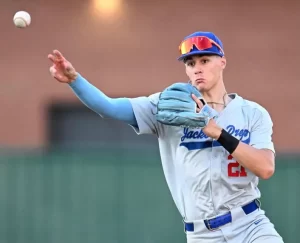2020 Five Round Mock Draft: Chicago White Sox
Here at FutureSox, we recently released our 2nd version of a mock draft in advance of the festivities on June 10-11. With only five picks in the 2020 draft, I’ve decided to predict all five rounds for the Chicago White Sox.

 Unlock with Patreon
Unlock with Patreon





Because of the limited five round 2020 draft I believe the White Sox will prioritize college players who have a more proven track record against better talent and less leverage than a prep star who can always fall back on his scholarship commitment to a university. A college player would also advance more quickly to the big leagues and might be a better strategy with the limited number of picks in this year’s draft. According to most mock drafts I have seen, the White Sox will have their pick of toolsy lefty hitting UCLA CF Garrett Mitchell and top rated college switch-hitting C Patrick Bailey.
If the White Sox do aim for a high school talent it would more likely occur early in the draft when they can approach their full bonus allotments to dissuade a prep player from their college commitment. The two high school players who stand out and could be available to the White Sox with their #11 pick are prep pitcher Jared Kelley who is the pick in this mock draft along with toolsy local prep SS Ed Howard.
Mitchell seems to have the highest floor and ceiling with across the board tools that include a 70 run and 60 hit/arm grades on the 20/80 scale. He is also the highest rated of the four prospects according to MLB.com’s top-200 class and only lost draft stock due to his Type 1 diabetes. He has decent size and does project as an MLB CF with great athleticism. His appeal to the White Sox would also be his left-handed bat.
Bailey is the top rated C in the draft, a college player who has similar hit tools to Zack Collins but with better defensive skills. His offense is his biggest question mark but because of his defense his floor is that of a legit MLB backup catcher. If he can hit enough he projects as a solid starter behind the dish.
Howard is the highest rated SS in the draft and one of the top high school position players. His offensive tools suggest Tim Anderson with better defensive skills and a high baseball IQ. He’s also a product of Mount Carmel High School and a former member of the White Sox ACE program. As a prep player he is expected to mature physically which should increase his power potential but is still expected to remain a SS in MLB.
It’s been said about Kelley that he should be MLB ready by the time he’s 21 so about 3 years. Thats the same time as Lopez, Giolito, Kopech either hit free agency or are about to free agency as well as Keuchel getting to the end of his contract. That’s a lot of holes to fill, and getting guys in the system to potentially be long term options for the sox to naturally reload the staff should be priority #1. I know you don’t usually draft for need in the MLB draft but Kelley checks all the boxes talent wise and makes too much sense.
My biggest concern with Jared Kelley is one shared by many scouts, a right-handed prep power pitcher who’s second best pitch is a changeup. I’d feel a little better about Kelley if his #2 pitch was a breaking ball.
Kelley does have command in his favor, something that could also be said about Chris Sale who’s top two pitches entering the 2010 draft were also his fastball and changeup. Of course, Sale had more experience coming out of Florida Gulf Coast University after also starring as a high school pitcher in Lakeland, Florida. Sale also dominated as a left-handed pitcher which is generally a tougher road to travel in the prep and college ranks.
Speaking of college southpaws, I’ve also seen a mock draft that had Louisville’s Reid Detmers dropping to the White Sox at #11. Detmers is the most polished lefty in this year’s draft and is generally expected to go in the top-10. Before going to Louisville, Detmers was one of Illinois top high school pitching prospects in 2017 and was drafted in the later rounds by the Braves. He upped his game significantly in college and is now poised to be a certain first round pick.